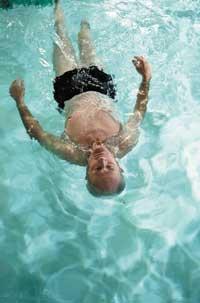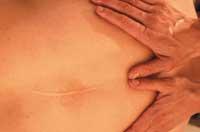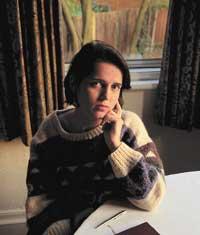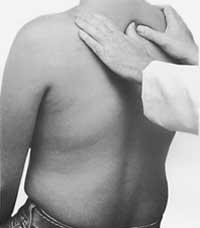Vertebral column: axis of health
2001/11/01 Agirre, Jabier - Medikua eta OEEko kidea Iturria: Elhuyar aldizkaria
Chiropractic explores the existing relationships between some diseases of the body and the nervous system that circulates within the spine. The treatment is performed mainly through the hands, making precise and precise adjustments in the vertebral column. The account is: “Applying a controlled force with hands in a vertebra that has lost its normal positions and functions, thereby recovering the health of the person,” says Belen Sumyer, vice president of the Spanish Association of Chiropractic.

And how does the situation of the column affect our well-being? In fact, inside the column is the spinal cord, and the nerves that leave it inert most of the organs of the body through the ducts that leave the intervertebral orifices, governing the functions and sensations of the body.
The vertebrae can undergo small displacements if these exit holes of the nerves (pinzamientos) are reduced, if normal movements of the joints (bindings) are reduced or if there is inflammation. These structural alterations of the spine can lead to the compression of the nerves, which will cause neuro-musculoskeletal problems such as headache, vertigo, dizziness, asthma or otitis, to mention the most frequent ones. This is the case of 80% of patients who attend the chiropractic consultation.
To carry out the diagnosis, the professional specialist in chiropractic will perform a physical examination of the patient, and then carry out complementary tests, according to the cases: orthopaedic and neurological tests, thermography (distribution of the temperature in the human body), X-rays and, where appropriate, blood and urine tests.
But the specificity of the specialty is that, in addition to the above, it will perform a structural analysis of the column and of the joints or joints and a biomechanical look to detect possible alterations and establish an adequate adjustment or manipulation. And of course, if the case requires it, the chiropractic specialist will send the patient to another doctor.
Today the specialty is not known among us. As Belen Sumyer denounces, “there are still no special faculties, most of the chiropractors are foreigners, and those here have to go abroad if they want to study successfully.”
In many other countries (England, Denmark, Switzerland, Norway, Finland, USA, Canada...), however, chiropractic is a legally established medical specialty, which occupies its place and importance in local health systems. However, this legal vacuum can also provoke intrusiveness, so I would recommend that you make it available to properly qualified professionals.

In consolidated countries as a medical specialty, chiropractic offers excellent results. At present it is considered an alternative to pharmacological treatment and surgery, being a very adequate way to save money for health systems.
According to studies carried out by US insurance companies, chiropractic reduces the health cost by 45-50%. But in addition to economic reasons, compared to conventional treatments, it often manages to avoid surgery and hospital admission, with times of low work in half.
Chiropractic appears, therefore, as an area of great potential and possibilities for the health sciences. “It is a conservative, non-aggressive treatment. It is able to detect and correct not only the biomechanical problems of the spine that affect health, but also to prevent them. It offers an alternative to medication and surgery, leaving free the subsequent use of other healing techniques.
Tips for Combating Back Pain
- Sleep in the hard bed with the legs flexed in lateral decubitus, or face up with a pillow or cushion under the knees.
- When you get up from the bed, put on your side, first remove your legs keeping your back straight and use your arms to sit.
- Kneel down to make the beds.
- Place in the lifting position of the weight or loads.
- It is better to dress from below, sitting in bed or lying down. Avoid as much as possible an excessive bending of column.
- Even for wearing shoes, better sitting. Do not use heels too high and better than rubber heels than hard heel.
- Avoid stretching too much the column to catch things up. Climb on a chair if necessary.
- When sitting back always supported on the chair, well supported.
- The TV and computer screens must be at the height of the eyes, neither above nor below.
- Better to push things than to drag them. For example, carry the shopping cart ahead, not from behind.
- When ironing, the back is placed against something, like the wall. And, alternatively, place the legs on a whistle.
- To sweep and pass to the vacuum cleaner it is convenient to fold the lower limbs. Use long handlebars tools.
- If you work standing or stand for a long time, from time to time you have to bend your waist and lightly climb your feet.
- In swimming, the best is the back style. It is recommended to walk, but it is not advisable to do golf or jogging in periods of pain.

Gai honi buruzko eduki gehiago
Elhuyarrek garatutako teknologia





